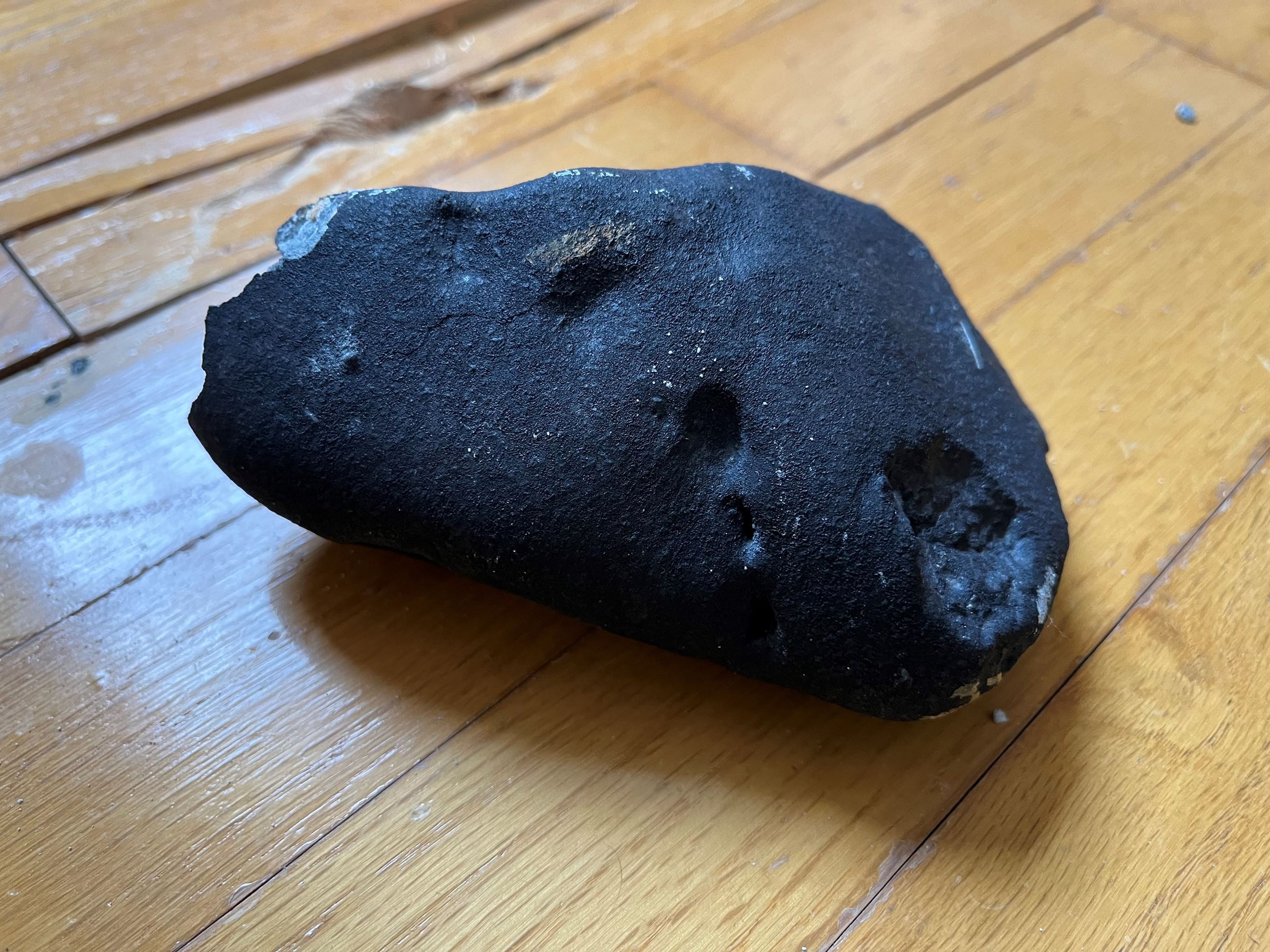Rare 4.6 Billion-Year-Old Meteorite Crashes into New Jersey Home
Key Highlights :

An extraordinary event occurred in Hopewell Township, New Jersey earlier this week when a 4.6 billion-year-old meteorite smashed through the roof of a residential home. Scientists from The College of New Jersey (TCNJ) confirmed the meteorite’s origin on Thursday (May 11).
The meteorite, which is about 6 inches long by 4 inches wide (15 by 10 centimeters) and weighs 2.2 pounds (0.9 kilograms), is a rare stony chondrite and is believed to be the first of its kind to be discovered in a populated area. It is estimated to be about 30 to 40% denser than the most common rocks found on Earth, such as slate and granite.
The meteorite was still warm when it was discovered by Suzy Kop in her father's bedroom around noon on Monday (May 8). After emergency responders cleared Kop, her family and their home of any harmful radioactive residues, Kop handed over the space rock to TCNJ for further inspection.
At TCNJ, Nathan Magee, chair of the physics department, and his team consulted Jerry Delaney, a retired meteorite expert who had worked on the meteorite collection at the American Museum of Natural History in New York. The team confirmed the space rock to be about 4.56 billion years old and will likely be named Titusville, NJ — the postal address closest to its landing site.
Using a hand lens designed to look at rocks closely, Magee’s team found that the meteorite's minerals are blue and gray in color, with a small amount of other metals mixed in. Its top layer has a blackened crust a few millimeters thick from partially burning up in Earth's atmosphere.
The team studied the rock's texture and composition by placing it inside a large chamber of a scanning electron microscope. Based on initial estimates, the meteorite is a chondrite of class LL-6, which has less iron than other members of its family.
The meteorite is an incredible find as it is believed to be one of the oldest objects in the solar system and has been around since the beginning of its creation. It is also a rare exception that it crashed into a populated area, as most chondrites found to date have been discovered in Antarctica.
The meteorite is a remarkable discovery that will likely lead to further research on space rocks and their orbits, as well as building strikes. It is a reminder of the beauty and power of outer space and the universe.
